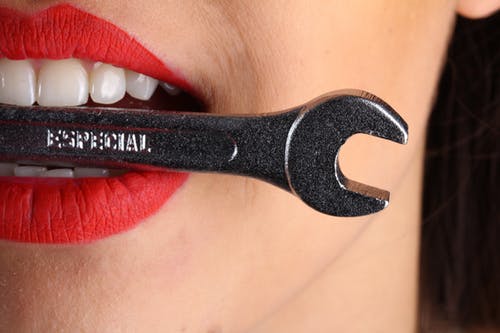Breaking new grounds in cosmetic dentistry, Invisalign has emerged as a game-changer. In contrast to the traditional braces that incorporate noticeable metal brackets and wires, Invisalign has introduced clear aligners, effectively removing the social discomfort commonly linked with standard braces. With a name like ‘Invisalign,’ it’s no surprise that these devices are almost invisible. This allows individuals to undergo treatment without grabbing unwanted attention.
What Is Invisalign?
The system uses a series of custom-made, clear trays called aligners. Each set of aligners is designed to make slight adjustments to the position of your teeth. The adjustments are mapped out by your dentist in advance, based on the path your teeth need to follow to reach their desired position. This innovative approach uses no metal wires but gently shifts your teeth over time.
The Invisalign Treatment Process
The process starts with a consultation with your Hamilton family dentist to discuss your goals and examine your teeth. If you’re considered a suitable candidate, a plan is created, and measurements are taken to make your custom aligners. You’ll wear each set of aligners for about two weeks, then move on to the next set. You’ll visit your dentist every six weeks for check-ups to monitor your progress.
Determining if You’re the Right Candidate for Invisalign
Invisalign is a widely popular orthodontic treatment for those wanting to straighten their teeth without the appearance or discomfort of traditional metallic braces. Here are the factors that determine if you are a suitable candidate for Invisalign:
1. Alignment Issues:
- Gapped teeth: Invisalign can gradually shift your teeth to close unwanted gaps.
- Crowded teeth: If your teeth are too close together, Invisalign can help to reposition them correctly.
- Overbites: When your upper teeth bite over the lower ones, Invisalign trays can help adjust this.
- Underbites: This is a condition where your lower teeth protrude past the upper front teeth, which Invisalign can correct.
- Open bites: If your upper and lower teeth don’t meet correctly when your mouth is closed, Invisalign can help correct this.
- Crossbites: This condition occurs when the upper and lower jaws are misaligned; it can lead to gum disease and teeth wear, which Invisalign can help adjust.
2. Dental Health:
- Gum disease: Invisalign is not recommended for patients with active periodontal disease. Once treated, your dentist may consider you for the treatment.
- Cavities: Uneven or damaged teeth surfaces might affect the fit of the Invisalign trays. Cavities should be filled before starting Invisalign.
- Tooth decay: If teeth are decayed or weak, they can’t withstand the pressure exerted by the aligners and might get damaged; hence, any decay should be treated before starting with Invisalign.
3. Maturity Level:
- Responsibility: Wearing Invisalign trays for the recommended 22 hours a day and maintaining oral hygiene is crucial for the success of the treatment.
- Compliance: The aligners need regular cleaning, must be removed while eating or drinking anything except water, and must be switched as advised by the orthodontist.
4. Complexity of Your Case:
- Severely rotated teeth: Invisalign might be unable to correct teeth that are rotated more than 20 degrees.
- Multi-planar movements: Teeth that require moving in different directions simultaneously might be better treated with traditional braces.
- Extrusion or intrusion: Invisalign may not be effective in pulling down teeth that are too high or pushing up teeth that are too low.
5. Financial Capability:
- Cost: The treatment costs more than traditional braces. The final cost may vary depending on the individual case and geographical location.
- Insurance: Some dental insurance plans cover Invisalign treatment fully or partially.
- Payment Plans: Most dental offices offer monthly payment plans to make the treatment affordable.
6. Time Commitment:
- Regular Visits: Patients must visit their orthodontist roughly every 10 to 12 weeks to assess their progress and get new aligners.
- Treatment Duration: The average treatment duration is 12 to 18 months, but it varies depending on the case’s complexity.
While Invisalign offers several advantages, the treatment is only for some. Therefore, weigh your options, note the commitment necessary, and assess your lifestyle. Invisalign’s benefits outweigh most drawbacks for many people, making it their teeth-straightening solution. Suppose you’ve decided Invisalign is for you. In that case, it’s time to make an appointment with your dentist to get started on your journey to a confident smile.
Key Takeaways
Choose Invisalign today for a less invasive and more attractive alternative to traditional braces for your teeth straightening needs. Take a moment to consider your unique circumstances, level of dedication, and lifestyle before diving in. Prioritise good oral hygiene, balanced eating habits, and regular dental check-ups, pairing these with solutions like Invisalign to achieve and maintain optimal oral health. Remember, an early investment in teeth can save you from more extensive, costlier treatments.



